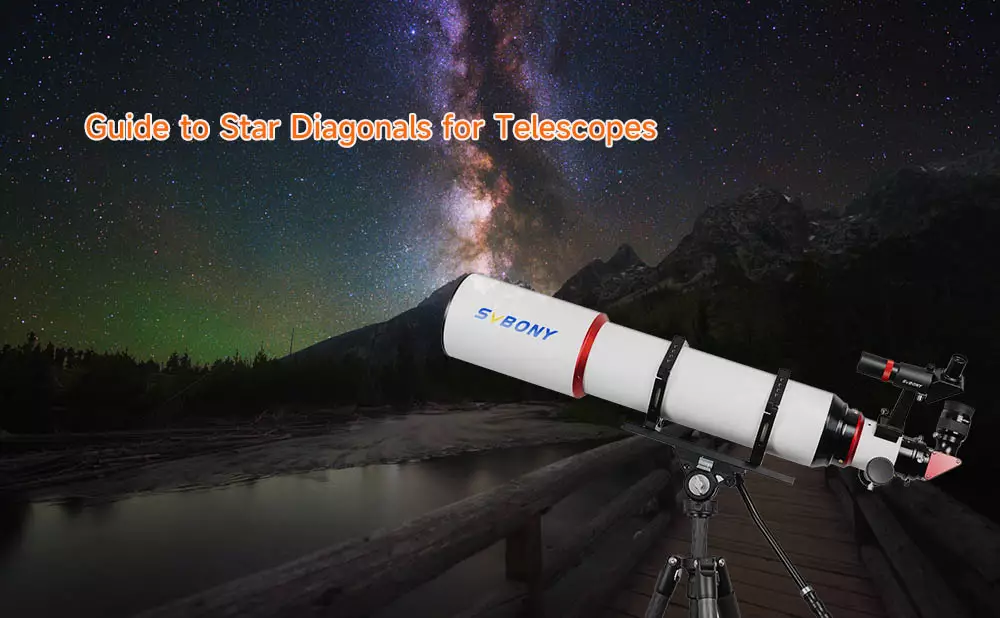Cheshire Eyepiece vs Laser Collimator – Which Is Better?
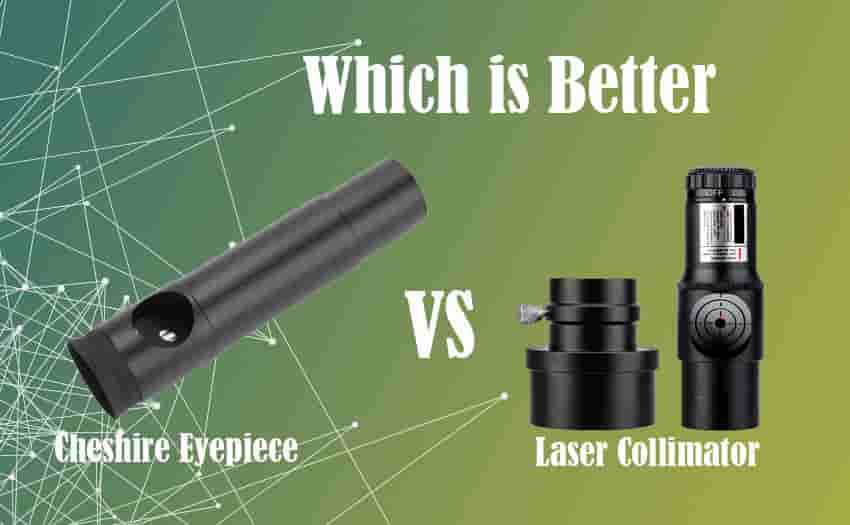
Cheshire Eyepiece vs Laser Collimator – Which Is Better?
If you own a Newtonian reflector telescope, you need to collimate it from time to time. You might be wondering what you should use for the collimation, Cheshire Eyepiece or Laser Collimator.
The short answer is that you can use both for collimation. Cheshire eyepiece is better for aligning the secondary mirror, and Laser collimator is good for aligning the primary mirror. But you can also collimate your mirrors with only one of them. It is a personal preference because each of them has pros and cons.
In this article, I will explain what collimation is, and we will take a closer look at each collimation tool so you can get a good understanding of how they work.
Table of Contents
1, What Is Collimation
2, Cheshire Eyepiece Collimator
3, How To Collimate Telescope With Cheshire Eyepiece
4, Laser Collimator
5, How To Collimate Telescope With Laser Collimator
6, Laser Collimator Misalignment
7, Conclusion
What Is Collimation
Collimation has to be done only on reflecting telescopes. Reflecting telescopes use two mirrors to produce the image in your eyepiece.
One is called the primary mirror, and it is the big parabolic mirror at the bottom of the optical tube.
The secondary mirror is a small mirror under the focuser mounted on the four spider vanes, tilted 45 degrees; it is reflecting the light from the primary mirror to the focuser.
These mirrors have to be perfectly aligned to allow a sharp image in the eyepiece. If the telescope can’t produce a sharp image or have a hard time focusing the object in the eyepiece, it usually means that the mirrors are out of collimation.
It usually happens when you receive your new telescope from the reseller, and the mirrors will get out of the alignment during the shipping. It can also happen when you are transporting the telescope, or accidentally drop it.
The best practice is to always check the reflection telescope’s collimation before each stargazing session to save you a headache during the clear night.
Cheshire Eyepiece Collimator
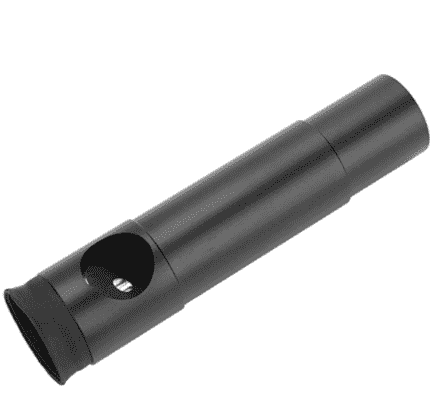
Cheshire eyepiece collimator is a simple device that looks like your optical eyepiece. The Cheshire eyepiece coms in different lengths, and it is up to you what you prefer. I prefer the shorter one.
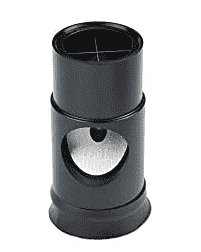
On the top, you have a rubber cap with a small pin hone in the middle that you are looking through during the collimation. Inside is a tilted reflective part with a hole, and a crosshair at the bottom. You can use the Cheshire only during the day to collimate the mirrors because the reflective part inside the Cheshire needs light to be visible.
Cheshire eyepiece is perfect for collimating the secondary mirror. The secondary mirror must be perfectly aligned under the focuser. In simple words, it must be in the middle when you are looking through the focuser and tilted to reflect the primary mirror in the center.
You don’t have to collimate your secondary mirror very often. It usually holds the position in place unless you drop the telescope or during the rough shipping or transporting. I have done the collimation of the secondary mirror only once after I received the telescope. Since then, the collimation is holding perfectly because I use my telescope only at home, and I don’t transport it anywhere. And fortunately, I never dropped it.
How To Collimate Telescope With Cheshire Eyepiece
The view through the Cheshire eyepiece during the collimation will differ between telescopes. For fast telescopes (f5 and below), it will be little off-center, and for the slow telescopes (f5 and above), the view will be more centered and easier to collimate.
The goal here is to center the primary mirror reflection in the secondary mirror and reflection from the Cheshire with the secondary mirror.
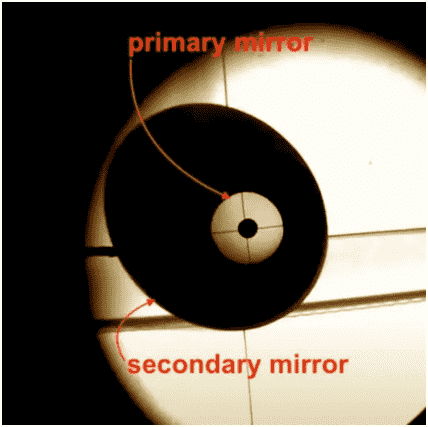
To achieve that, you have to use the adjustment screws on the secondary and primary mirrors while looking through the Cheshire eyepiece collimator tool.
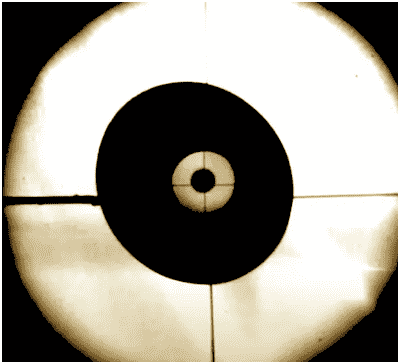
Cheshire Eyepiece PROS:
- no batteries needed
- cheap
- perfect for secondary mirror collimation
Cheshire Eyepiece CONS:
- can be used only during the day
- tricky to use with longer telescopes
- not perfect for primary mirror collimation
Laser Collimator
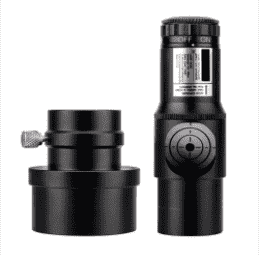
The laser collimator is a device that is using a laser beam to align the primary and secondary mirrors. I use the laser collimator before every stargazing session to check the collimation of my telescope.
The laser collimator is perfect for collimating the primary mirror and the tilt of the secondary mirror. It will not help you properly center the secondary mirror in the focuser, so you will have to use the Cheshire collimator or the collimation cap for that.
But, as I said before, you don’t have to collimate your secondary mirror as often as the primary mirror. So when you do that with either Cheshire or collimation cap, just use the laser collimator for the primary mirror because it is more convenient and precise.
The laser collimator uses a laser beam with adjustable brightness and bull’s eye tilted section inside that you can see on the side of the tool.
How To Collimate Telescope With Laser Collimator
Before you use the laser collimator, make sure that the secondary mirror is centered under the focuser using a Cheshire or collimation cap.
Place the laser collimator inside the eyepiece holder and turn it on. Then look inside the telescope, and you will see the red laser dot on the primary mirror. Adjust the brightness of the beam to your preference and light conditions. Be careful not to damage your eyes. It is a laser, after all.

Primary mirror donut
Every primary mirror should have a small donut in the center. If the laser dot is not in the middle of the donut, you have to use the adjustment screws on the secondary mirror to get the laser inside that donut. It is for adjusting the tilt of the secondary mirror.
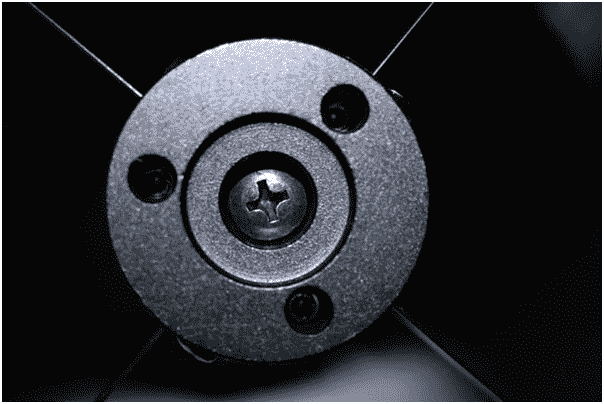
Secondary mirror adjustment screws
Then you have to go to the back of the telescope to adjust the primary mirror. Rotate the laser collimator before adjusting the secondary mirror so you can see the bullseye in the collimator tool when you are adjusting the primary mirror.
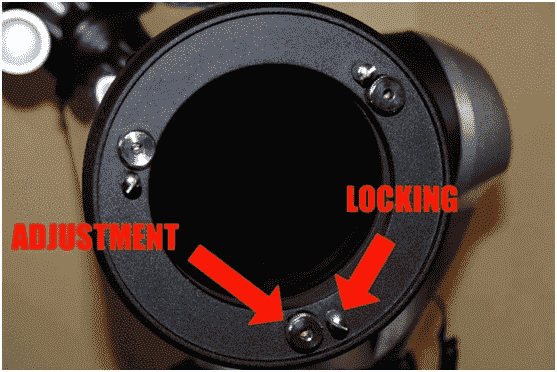
Primary mirror adjustment screws
If you can see the laser off-center, use the adjustment screws of the primary mirror to get the red laser dot in the middle so you can’t see it anymore. And you are done.
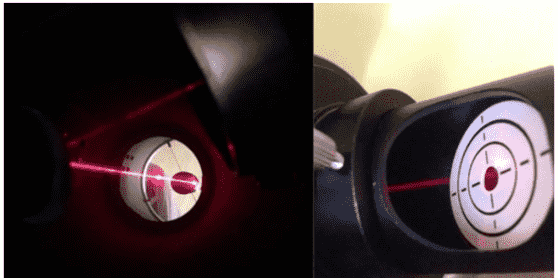
Laser Collimator Misalignment
Let’s talk about the “elephant in the room” with the laser collimator. Many amateur astronomers don’t use the laser collimator because if the laser is misaligned with the body of the tool, the collimation is almost impossible—that’s why they use Cheshire eyepiece over the laser collimator.
When you rotate the collimator on its axis in the focuser, you can see that the beam in the primary mirror will not stay in one spot, but it will move slightly. However, it is not a good laser alignment test because it can be caused by a small gap between the collimator and the eyepiece holder, or even the whole focuser can be misaligned.
To test the laser alignment, you have to place the collimator in some horizontal holder on the table, shine it on the wall and rotate. Even if you find out that the laser is not aligned, you can calibrate it with three screws on the collimator’s side. Every good laser collimator should have these calibration screws, which are sometimes covered with rubber caps.
Here is an excellent video explaining how to collimate the laser collimator:
Aligning the focuser is more complicated, but the focuser is rarely misaligned. From my experience, I never had any issues or complications to collimate the telescope with the laser.
Laser Collimator PROS:
- best for primary mirror collimation and secondary tilt
- easy to use
- can be used at night
Laser Collimator CONS:
- not useful for centering secondary mirror
- the laser can be misaligned
- need battery
Conclusion
As you can see, it is a good idea to have both Cheshire and laser collimator to get perfect collimation of the reflecting telescope. And don’t be scared of the collimation process. It is simple, and it will become the second nature for you after a few nights.
I often remember not checking the collimation before the stargazing session, and the image in the eyepiece was sharp. Only after I checked later, the collimation was a little bit off. So unless you are doing astrophotography where the collimation must be perfect, don’t make a big deal of it and enjoy the night sky.







